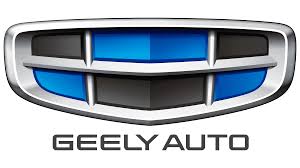When your stock investment is down >50% for more than 1-2 years...
This is a very important and common situation with value investors when their best stocks might fall 50% due to market volatility, struggling businesses and an ailing economy. Just selling the stock to feel good is not a solution but this is the time to pen down our learning and then take a decision to have the playbook ready for the future.
Many Chinese stocks are struggling since 2021 and have yet not come back to their buying price. Similar situation has happened in India in 2017 to 2020 when stocks especially small and mid caps have fallen and not come up for more than 4 years. Covid-19 has made the Indian scenario even worse because small businesses were forced to shut down due to their rural focus.

Unlike India the Chinese situation has worsened where the USA and China differences seem to be growing after Covid-19. Politics has taken over economics after Xi Jinping became president for the third time coinciding with the real estate crisis have forced investors to boycott Chinese stocks. Many institutional investors sold their stocks and moved on to other markets. Even today at the time of writing this article there is no solution in sight.
USA companies adopted China plus One strategy to handle the future supply chain bottlenecks; Obviously India got a lifetime benefit.
Let’s focus on the specifics. Firstly, it is very important to buy stocks based on the fundamentals of the company. Secondly while buying the stock it is very important to buy them at an attractive valuation. PE must be less than 3-5 years of future earnings growth. There should be clear evidence of future growth.

The stock must be from the matured industry where other players are also making money and not from the nascent or upcoming industry where consolidation will kill the profit of the whole industry.
In China only BYD (SHE:002594) is making money (in the EV sector) for the shareholders while all other competitors have been losing money for their investors for the last 5 years. There are many reasons behind this but they were easy to spot (probably in the hindsight). That is the difference between an inexperienced investor and the one who has lived through the cycles of pain.

BYD has a market leading position in China with consistent ROCE(5Yr: 11.05%) and ROE(5Yr: 10.12%) and clearly has a first mover advantage. Its products are very competitive and of good quality and only Tesla comes close to it in financial strength.
Here, one will definitely get misled if he or she will focus on the end product (as a consumer instead of as an investor), where Geely Auto (HKG:0175), Xpeng Inc. (NYSE:XPEV), Li Auto (HKG:2015), and Nio Inc. (NYSE:NIO) also have similar or better products in the market.
Lesson: Strong financials are the most important strength of value investors.
Another established company in China is Geely Auto (HKG:0175). It is one of the oldest combustion engine car manufacturers with strong financials and solid backing from its founder Li Shufu. However Geely’s financial structure is very complex and it (the holding company) looks more like a supermarket than a niche player unlike BYD. BYD is a very focused Electric Vehicle player with no burden of internal combustion engine (ICE) such as Geely Auto, Toyota, GM, Honda etc.

Readers must know that except Maruti (NSE:MARUTI) (in India) no auto manufacturer had compounded wealth for stock investors in the last decade. Hence, the ICE industry is to be avoided at all costs due to its highly competitive nature and they all are burdened with their legacy business to migrate to EV business. Maruti also focused only on cars and especially petrol cars for a long time unlike Mahindra and Tata Motors who were always trying to capture the whole market in all segments and were always behind the Maruti.
Lesson: Investors should focus on niche players like Ferrari (BIT:RACE), BYD (SHE:002594) or Tesla (NASDAQ:TSLA) and avoid commodity or mass market companies in any sector.
I purchased Alkyl Amines Chemical Ltd (NSE:ALKYLAMINE) in 2022. It is a speciality chemical business with high barriers and its PE ranges from 40 to 140. It is a very highly regulated industry, however even in 2024 I am yet to reach my buying price but its PE is still above 60-70. At the same time I bought Voltamp (NSE:VOLTAMP) at PE of 17 and tripled my money in less than 1 year. For a long term investor, slight over valuation is not that important but it definitely distracts as a bad decision if stock has not been rewarded in 1-2 years. Hence it is better to buy the stock when its valuation is compelling.
Lesson: It is a very important lesson learnt very hard especially when we are in public fund management. One institutional capital manager once said, “The portfolio managers are not in the asset management business, but they are in clients’ liability management business. “
Clients don’t want to know the process or future of the company. They don’t have the patience to remain invested for 5 years. That’s human psychology. All they care about is returns and trust portfolio managers to deliver the same. I don’t mean to say it is wrong to buy high growth, high quality stocks at high PE, but if avoided, it will increase the odds of making money faster and with a lesser unit of stress.
———————————–
If a business is complex and yet losing money and its cash flow is deteriorating quarter by quarter, it is better to exit the stock. I exited Geely Auto when I found the same. But if financials are simple, the company is expanding by launching more products, cutting costs, innovating existing products, and the stock’s valuations have reduced, it is better to increase the stake in the stock.

Zoom (NASDAQ:ZM) is one such Wall Street darling that I purchased at $30 billion down from $200 billion during Covid-19. After the restrictions were lifted across the world, the company’s top line was negatively impacted since the world started getting back to the hybrid and offline model of business. Zoom’s shareholders and analysts were bearish on the stock and the company’s fundamentals stagnated from 2022 to H2 2024.
Knowing that Zoom is the best product in the segment and has consistently beaten Microsoft and Google in video conferencing business and it has clean, simple and easy to understand financials with a strong work culture of innovation, ethics and honesty; buying the stock at beaten down valuation is a very difficult situation where the value investor will often find him alone.
I did a careful analysis of Zoom’s balance sheet and found 50% cash, zero debt and the product is still loved by businesses worldwide in the hybrid work environment post Covid-19. Zoom also started incorporating AI features such as AI summary, and collaboration tools and transformed Zoom meetings to Zoom workspace.
You would have noticed ZOOM became ZOOOOOOM with various applications and features in its software. Zoom rebranded as an enterprise for businesses with features such as Zoom Phone, Zoom Events and Zoom Contact Centre. These were enterprise products with sticky nature unlike Zoom meetings which can be replaced by free and bundled software from Google (meet) and Microsoft (team) respectively.
Zoom has also consistently bought back its shares with its free cash flow (Around $1.5 Billion worth of shares from Feb 2022-Jan 2024) and its enterprise business segments started increasing their revenue share in the overall business. It is a clear cut case of businesses getting ready for 2.0 and high probability of share rewarding the long term shareholders. It’s too early to call the shorts but things are heading in the right direction.
Lesson: If a company’s financials are improving and valuation has taken a beating it is not the time to sell the stock but it is time to buy more shares of the company especially when it is profitable, in line with buyback by the promoters and product quality is improving.
Join our masterclass on value investing & Master the art of finding undervalued gems.
Click the link to register-

 Gupta
Gupta